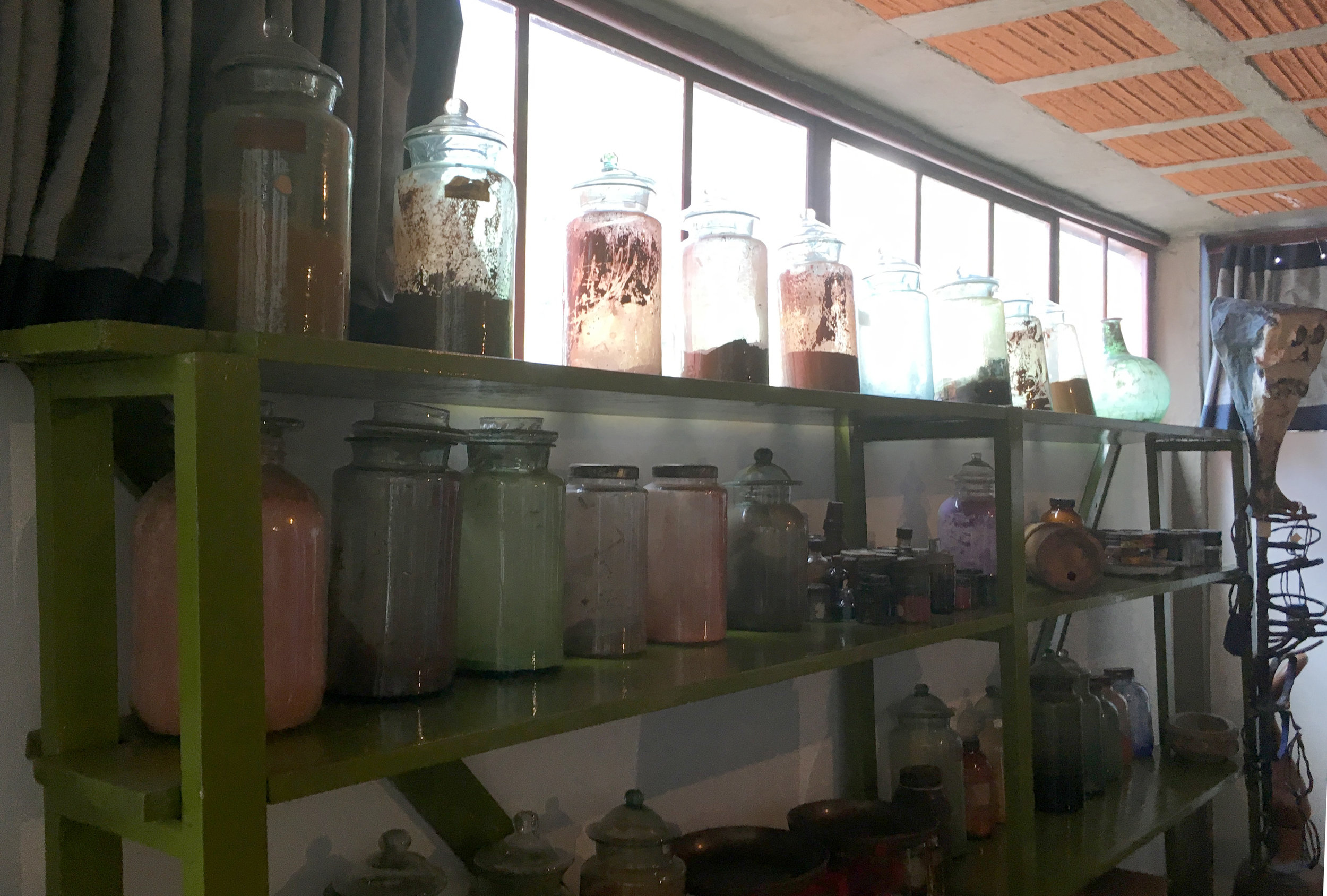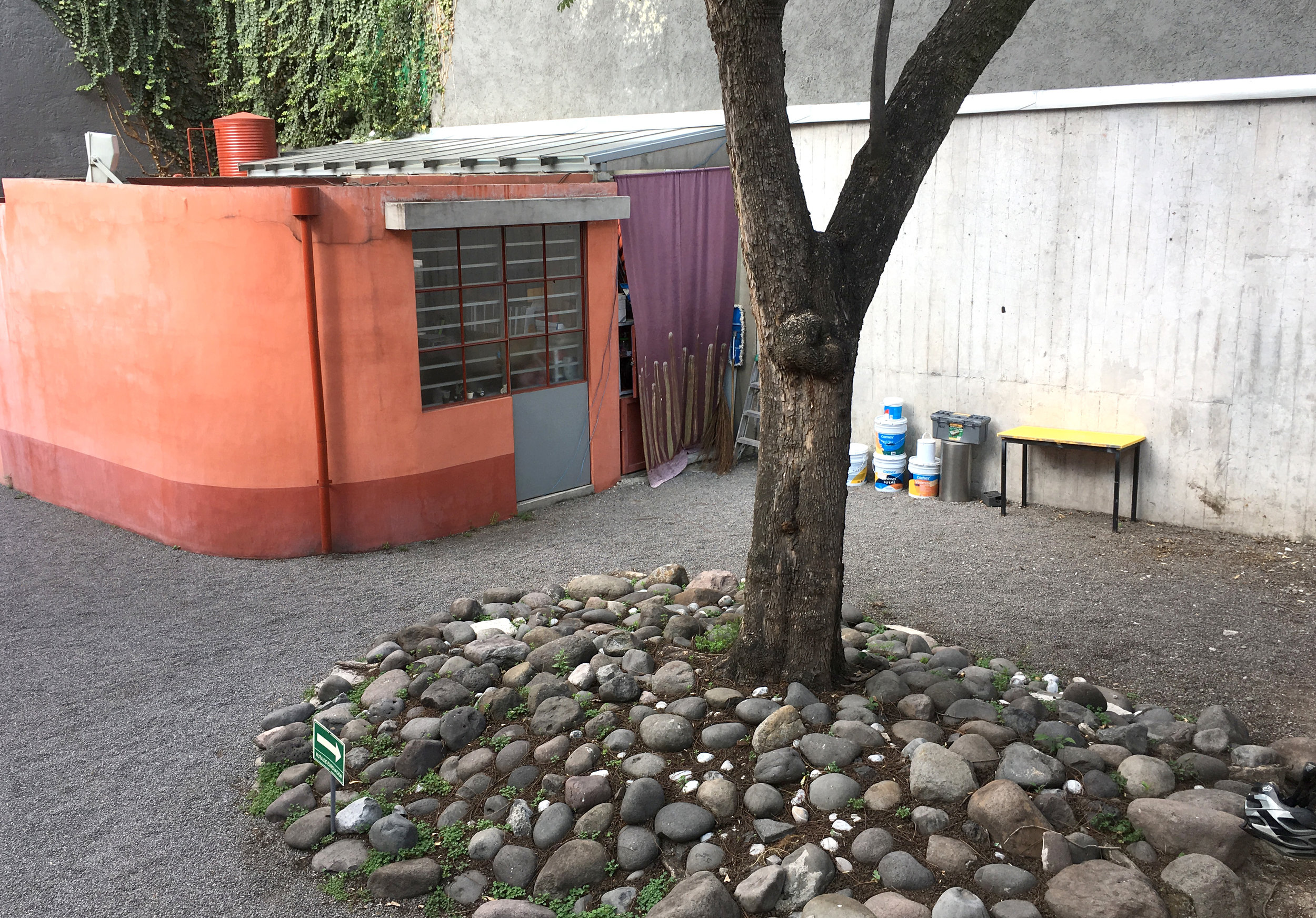Museo Casa Estudio (CDMX)
Mexico City. El Museo Casa Estudio Diego Rivera y Frida Kahlo is just one of the many museums related to these two artists. Here, the first encounter is a living fence of cactus that appears to be the only security surrounding the buildings. I wonder if they have guards on constant duty?
There is squeezable space between the plants. But perhaps a living barrier naturally gets more respect.
The cactus defines the small step down entry,
and divides the two main parts of the property, directing the visitor flow.
Everything surrounding this famous couple has a mystique, including this pair of side by side home/studios, connected by a bridge. But the functionalist architecture of Juan O’Gorman (1931) is so important here that most of the buildings are actually empty. Starting with a model at the entry, the visitor’s attention is focused on the historical significance of the architecture.
A portrait of the architect is used to block a no-entry room.
One of many characteristics of Gorman’s acrhitecture is his helical stairway.
Architectural interpretation is provided as pull out, bilingual cards.
Panels cover the windows of this empty upper room, presumably to make it a usable exhibition space, currently unused.
Diego’s studio is the only “inhabited” area of the compound.
Seeing an artist’s work in the artist’s studio is like seeing an animal roaming free in it’s native habitat. The art, collected objects, inspirations, art supplies, furniture and the space itself add up to an integral whole.
The studio gives the art a natural context, taking the pressure off labels, which are minimal.
Visitors are captivated by the feeling of a personal sanctuary. In that respect an artist’s studio becomes the perfect museum for their work.
In this tiny bedroom, Diego kept his pistol next to his bed. The floor symbol for “stand here” is a startling way to mark the artist’s death. Visitors are mostly reluctant to stand in the footprints, which seemed to be replicas of Diego’s actual shoes.
The small museum maintenance area is fully exposed, adding another, accidental tribute to the idea of “workspace.”
Likewise, open storage of exhibition furniture becomes noticable, as if it should have special meaning.


























